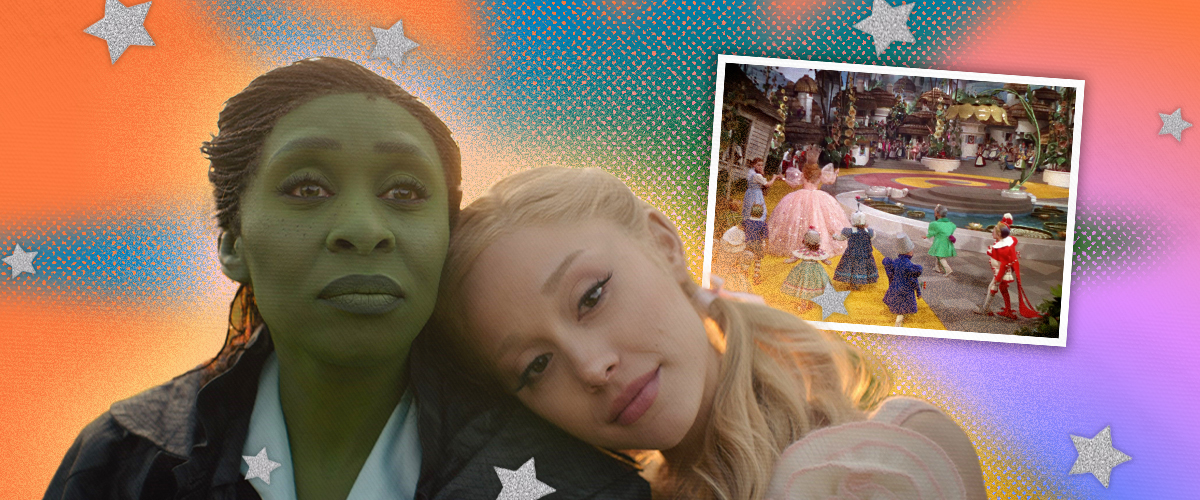IF YOU have ever seen bright, vibrant films like “The Wizard of Oz”, “Gone with the Wind”, or “Singin’ in the Rain”, or even “The Godfather”, you’re sure to be familiar with the concept of Technicolor.
As per the website Studio Bender, Technicolor is a series of processes that were used to produce color in motion pictures.
In a video from Vox, Phil Edwards explains that the company behind Technicolor was founded all the way back in 1914. They first started by merging together red and green, and then later on added a key third strip, which was blue.
In film, this process – otherwise called “three-strip Technicolor” would use a custom-designed camera which used three black-and-white film strips simultaneously, with an optical cube inside splitting the light beam into three parts.
One would focus on the green spectrum of light, another on the red, and another on the blue, Mascha Deikova of CineD writes.

These were then developed separately, flipped into positive matrixes, and then dyed with complementary colors: cyan for red, magenta for green, and yellow for blue. These would then be printed one by one onto a blank piece of film to finally create a Technicolor image.
To add contrast to these images, a black and white layer would be added as “the key” for more crispness.
The use of Technicolor in film grew to become rather popular because it allowed for highly saturated colors on-screen. At present, however, seldom does one see a film as colorful as they used to be.
The discussion around Technicolor recently started to arise again following the release of scenes from the upcoming film “Wicked”, wherein people were disappointed to see that the coloring of the movie did not look at all like that of the 1939 film, “The Wizard of Oz”.
Honestly amazing that modern filmmakers can take literally any source material, including a technicolor triumph like Wicked was based on, and turn its palette so washed out and blah. Underexposed, undersaturated, poorly lit film and tv shows are truly a plague upon our screens. https://t.co/YF1xA58JbP pic.twitter.com/4m4Jzgqr5g
— kay taylor rea (@kaytaylorrea) May 15, 2024
we have strayed so far from God’s light pic.twitter.com/cHRXF5wYQO
— the lesser known fourth head of Cerberus (@ethanrants_) October 29, 2024
La La Land is decidedly post-technicolor (just filmed on regular Kodak Vision3 and color corrected!) and it still looked like this, whatever’s going on with Wicked is certainly A Choice https://t.co/0s1SArRJyG pic.twitter.com/FnJlamEGOe
— anna 🦃 (@orphansirius) November 18, 2024
One user on X wrote: “[I don’t give a f*ck] if the technology for Technicolor doesn’t exist anymore, surely we can edit movies to make them look like this again.”
“Wicked would have been the perfect opportunity to bring back Technicolor,” another said.
Others, however, have come to the film’s defense, stating that it is quite literally impossible to do Technicolor in the modern day, and that “Wicked” is by no means meant to be a prequel for the beloved 1939 film.
What does one mean, then, when they say that making the film in Technicolor cannot be done?

No more Technicolor
It can be noted that the process of doing Technicolor was extremely complex, as well as expensive.
Sets were often lit with so much light that people would be working while the room was 100 degrees Fahrenheit, and it required a massive camera that made so much noise that it would mess with audio on-set.
As per Mark Wilson of Fast Company, Technicolor has been dead since 1965, given its difficult process. Following the release of the Eastman Kodak in the 1950s alongside a 35mm color film stock that was able to capture color on just one reel, it was quick to take over its predecessor.
Anna Keizer of Careers in Film also adds that aside from Technicolor no longer being used, the equipment needed to create it is gone as well, along with the people who both invented and worked with said equipment and processes.
“There is no way to replicate the effect of Technicolor today without considerable time and money going into the revival of it,” Keizer writes.
“For this reason, the films made with Technicolor are truly one of a kind.”
Does this mean, then, that the era of colorful films is over? Can it no longer be done in the modern day?
Not exactly.
Other ways to bring out colors
At present, there are ways to digitally mimic the look of three-strip Technicolor, and there are people who attempt to do so in their works. Deikova cites “Killers of the Flower Moon”, “The Aviator”, and “Barbie” as examples of this.
Edwards’s video on Vox also shows a clip that emulates Technicolor with the use of filters and color grading. There are also many other videos online that give tutorials on how to do the same via color correction among other tools.
Users online have also said that even without the use of Technicolor or without emulating it, there are many fun, brightly colored films that have been made since then. Funnily enough, the “High School Musical” series is a great example of just that.

The issue people have had with films and television shows growing more and more desaturated has long been around, even with more recent ones from the 2000s.
In a forum that discusses why films have moved toward using duller colors in film, one member wrote: “Messing about with color was previously a chemical process and much more time-consuming and fiddly to get right. Now, it’s a turn of a knob and is instant, so it’s much more common.”
He added that, at present, it seems that what seems popular now is turning the saturation down, changing it in favor of a blue tint for a colder, more modern look. Others have added that doing so helps to add drama to the atmosphere of a film.
An article written by Emily St. James for Vox also reasons that it may be because people have grown to become obsessed with the end of the world, which is influenced by post-nuclear war stories from the mid-20th century.
“That notion of the end of things is, yeah, what everything would look like after a nuclear war, but it’s so all-pervasive that basically every post-apocalypse looks like that now,” she wrote.
She also adds, however, that even with stories such as these, there are so many ways to tell them; not everything has to be dark, desaturated, and dull.
Whatever the reason, however, one thing is evident: people miss colorful films, whether it be with or without the use of Technicolor. What filmmakers and editors choose to do with that information is up to them entirely.
How useful was this post?
Click on a star to rate it!
Average rating 0 / 5. Vote count: 0
No votes so far! Be the first to rate this post.
We are sorry that this post was not useful for you!
Let us improve this post!
Tell us how we can improve this post?






